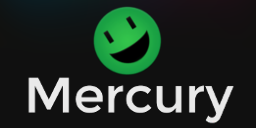[h1]Important notice on the future of the project[/h1]
http://i.imgur.com/0slGpSV.png
[h1]About the project[/h1]
Mercury is a small game library designed to simplify the complex and shorten the tedious for both beginners and veterans alike. With it, you can use the best aspects of OpenGL in a super easy and organized way optimized for game programming. It is built around the concept that beginners should be able to start with the basics and then move up onto a more complex plane of development with the veterans, all on the same platform.
Mercury puts all of its resources into keeping things short and simple. The initial setup of a game consists only of making a single class; then you are done. The interface is entirely documented for easy and fast learning, so once you are started, there is nothing between you and the end result but coding and creativity.
http://i.imgur.com/2WL3UOQ.png
http://i.imgur.com/a5Q3al5.png
http://i.imgur.com/d0wXRzm.png
Links
Official Website
Community Forum
Documentation
GitHub
Wiki
[h2]How it started[/h2]
Mercury started out about over a year ago as a simple personal project that I intended to use for my own games. After eventually forming a team of like-minded people to work on the library with, I started taking things much further. This is so far the biggest accomplishment I have made in my game development years, and I hope people love using it just as much as I (and the rest of the people on the team) have enjoyed working on it. It’s officially two months until the projects first debut release, and it’s come a long way since the day it has started.
[h2]What this is[/h2]
A game library intended for use by both people who are new to game development and hobbyists who are trying to explore ways in which they can (literally) step up their game as developers. Use it for whatever you wish. Just about anybody can download the project, start messing around with its features, and create something amazing.
[h2]What this isn’t[/h2]
Another ‘Über Simple’ library that sacrifices most of the common necessities of game development just to stay ‘easy’ for the user. Libraries that do this are terrible for people who want to actually get something done. Luckily, Mercury isn’t like that.
[h2]Have a say[/h2]
This is still an experimental project, so you should expect to find a few issues and bugs in it.
If you do happen to find an issue or bug, post to the project’s forum or create an issue on our GitHub.
There are also a few flaws in the library that get ignored over time; we can’t remember everything.
If you find something that seems odd or a bit out of place in the code, let us know.
You can also request features and contribute some code if you wish!
Just make a pull request on GitHub with your changes and we’ll try to look over the code as soon as possible.
Have fun with this.
Happy Coding,
- Wesley & Radirius
This post was last updated on November 8th, 2014
Ignore any of the older posts calling it an engine. This is, indeed, a library. 
The older posts in this thread are quite irrelevant now and do not, in any way, represent how the library is now.




